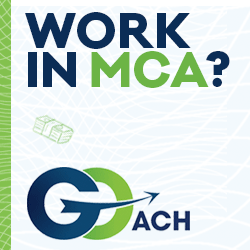Results 1 to 25 of 31
-
04-15-2019, 10:17 AM #1Senior Member











 Reputation points: 14001
Reputation points: 14001
- Join Date
- Jul 2018
- Posts
- 193
Underwriting formula
Can anyone provide the underwriting formulas funders use to formulate offers? I want to give my merchants a better understanding of how they qualified for the dollar amount they were approved for. TIA
-
04-15-2019, 10:46 AM #2Banned











 Reputation points: 10108
Reputation points: 10108

- Join Date
- Apr 2013
- Posts
- 245
Is it for you or the merchant? :-)
every funder has a different guideline they go by when underwriting a file. Prime funder's underwriters don't have the same guidelines for default and high risk underwriters. The guidelines are always changing because the industry is constantly changing. I can tell you that some of the things that are looked for to come up with an offer is; real revenue, balances, collecting methods, monthly payments etc. A lot goes into underwriting, I don't think underwriters get the credit they deserve because of the amount of time and effort that goes into pricing a deal.
SHOUT OUT TO ALL MY UNDERWRITERS!!
-
04-15-2019, 11:00 AM #3Senior Member











 Reputation points: 31326
Reputation points: 31326
- Join Date
- Apr 2018
- Posts
- 178
Shout out to all my underwriters!![/quote]
whoop! Whoop!
-
04-15-2019, 01:18 PM #4Senior Member











 Reputation points: 11185
Reputation points: 11185
- Join Date
- Jun 2013
- Posts
- 293
The simple formula is "Affordable payment amount" multiplied by "Total number of payments" divided by the "Factor Rate" you plan on charging. For Example:
$400 multiplied by 126 Payments = $50,400 divided by 1.40 Factor Rate = $36,000 Funding Amount
-
04-15-2019, 04:07 PM #5Senior Member











 Reputation points: 11191
Reputation points: 11191
- Join Date
- Apr 2018
- Posts
- 144
You need to know the max "purchase percentage" each funder goes up to.
Example: Max offer @ 18% purchase percentage for 132 payments (6 months) using a 1.37 factor rate based on $20,000 average monthly sales is:
$20,000*0.18 = $3,600
$3,600 * 6.29 (132 days/21 avg business days in a month) = $22,644
$22,644/1.37 = $16,500~ offer
-
04-15-2019, 04:16 PM #6Senior Member











 Reputation points: 11191
Reputation points: 11191
- Join Date
- Apr 2018
- Posts
- 144
I could be wrong, but I assume most funders limit their offers on "purchase percentage" of future sales and then factor in term and rate. Your high risk funders may go up to 25-30%.
So if you have a merchant averaging $20,000 in sales a month and making daily payments of $200, that's $4,200 a month in payments (assuming 21 payments a month), which is 21% of their future receivables purchased. Now you may find a second positions funder willing to go up to 30%, and will fund based on that 9% gap unless they want to consolidate and do one position of course.
$20,000*.09=$1,800 * 5.24 (110 days (assumed term)/21) = $9,432/1.49 (assumed rate) = $6,500~ offer
-
04-15-2019, 04:46 PM #7Member











 Reputation points: 4856
Reputation points: 4856
- Join Date
- May 2016
- Location
- San Francisco & New York City
- Posts
- 75
This. I'd call it PDR (payment-to-deposit ratio) instead of purchase percentage, but that's just semantics.
Prime lenders generally use lower PDRs and subprime lenders will allow higher PDRs. This is further complicated by the fact that different SIC code industries should command different PDRs...because on average, companies within one industry have roughly similar margin profiles. So calculating repayability based on industry-specific PDRs allows you to hack into a DSCR.
Matt Estes
BlueVine
partnerinquiry@bluevine.com
-
04-15-2019, 04:48 PM #8Senior Member











 Reputation points: 11191
Reputation points: 11191
- Join Date
- Apr 2018
- Posts
- 144
-
04-15-2019, 04:51 PM #9Senior Member











 Reputation points: 54989
Reputation points: 54989
- Join Date
- Dec 2013
- Posts
- 4,713
Marcus Clapman | Business Development | Cresthill Capital
(High Commissions Payout Group)
Tel: 917-521-6528 | Fax: 212.671.1473
Email: bizdev@cresthillcapital.com
http://www.cresthillcapital.com
-
04-17-2019, 01:58 PM #10Senior Member











 Reputation points: 12684
Reputation points: 12684
- Join Date
- Jan 2019
- Posts
- 140
You guys are overthinking it.
Theres not magic behind it. As an underwriter, just by looking at submission for 5 minutes you can tell what they qualify for. Yah there is math involved, but that comes after you already figured what the file is worth. If you think the file is good for 25k-30k then you use the math to make it work.
Just a note to ISO's if you think a file is worth 100k go into it thinking you'll get 50k. That way you will never be disappointed.
-
04-17-2019, 04:21 PM #11Member











 Reputation points: 4856
Reputation points: 4856
- Join Date
- May 2016
- Location
- San Francisco & New York City
- Posts
- 75
This is a factually true statement in the sense that the PDR "ability to repay" analysis can be run in less than 5 minutes.
No. The analysis should drive the offer - not the other way around.If you think the file is good for 25k-30k then you use the math to make it work
-
04-18-2019, 12:38 PM #12Senior Member











 Reputation points: 25752
Reputation points: 25752
- Join Date
- Apr 2015
- Posts
- 300
sure do u need anything else?
-
04-18-2019, 11:13 PM #13
In laymans terms you can just take a percentage of their gross sales (usually 6-12%) as a rule of thumb for your maximum funding amount (ASSUMING the deal is a clean, first position). A borrower with $1,000,000 gross annual sales will generally qualify for $60,000 to $120,000, contingent on the other parameters of the file.
Some underwriters fund with a primary emphasis on FICO and overall credit profile.
Some have simple cash flow algorithms (typically the MCA funders) that base it on PDR or CPDR.
Everyone has a unique set of parameters that crafts their decision, so this question would be a tricky to give a straight answer to.
What are you trying to accomplish?Zachary Ramirez CEO
Phone: 562-391-7099
Email: zach@zacharyjosephramirez.com
1661 N. Raymond Ave #265
Anaheim CA 92801
-
04-19-2019, 08:38 AM #14Senior Member











 Reputation points: 25526
Reputation points: 25526
- Join Date
- Aug 2018
- Posts
- 286
A lot of great stuff here all around.
Zach raises a great question:
"What are you trying to accomplish?"
I am not totally certain, but I am assuming the reason you "want to give merchants a better understanding of how they qualified for the dollar amount they were approved for," is for the Ultimate Outcome of funding these merchants more efficiently.
This may not be the whole story, so I apologize if this is not fully on, but hope its helpful.
If the outcome is to close and fund, I am assuming you have been frequently fielding questions/objections about the dollar amount approved.
If this is the case, the questions/objections may be showing up because the merchant feels like the amount is too low.
If that is the case, you can (without going into all the details of how every Underwriting team determines an approval) explain that Underwriting creates a risk profile for every file, that has key variables/inputs, that allow them to come to decision. This is accurate for all Underwriting teams across the board.
Also explain that as the merchant/business owner, their job is to primarily maximize opportunity. And Underwriting's is to primarily minimize risk (while maximizing opportunity). The sequence of priorities are inherently different, but this is good - because it is the start of a relationship.
Associate them to a long-term relationship, ask strategic questions about how they can put this amount to work to grow the business, and call it tight.
Calling it tight is pointing out if their FICO, or average daily balances, or other hairy factors need to be worked on before better terms can be presented. Coach them up and let them know, "you improve x, your risk profile will continue to improve as we continue the relationship."
As their Trusted Advisor you will help consult them on how they can put the funding to work to benefit their business, no matter what amount it is.
Hope this is helpful.
Crush it!
-FundingStrategist
https://fundingstrat.com
-
04-19-2019, 11:01 AM #15Senior Member











 Reputation points: 14001
Reputation points: 14001
- Join Date
- Jul 2018
- Posts
- 193
Atlas financial answered my question. The formula he provided what i was looking for.
-
04-19-2019, 11:09 AM #16Senior Member











 Reputation points: 503040
Reputation points: 503040
- Join Date
- Oct 2016
- Posts
- 4,318
-
04-19-2019, 11:42 AM #17
You need to understand your fund. Every fund has different formula. We submitted a contractor as a test deal to 2 different funders. One offered twice as much at 1.2 buy rates the other offered half as much with 1.35 buy rates. With experience you will know where to send your files to. Also other funders have 95% computer models that do their UW so you have little room to work their terms. If you can learn how to prep your merchant better with documents and such you can get better pricing. Back in the day you use to have underwriter that graduated with associates degree in the arts trying to price a $5M dollar tech company when they were primarily familiar with a restaurant revenue! Today some funders actually have decent underwriters.
-
04-23-2019, 10:16 AM #18Senior Member











 Reputation points: 11191
Reputation points: 11191
- Join Date
- Apr 2018
- Posts
- 144
-
04-23-2019, 10:24 AM #19Senior Member











 Reputation points: 11191
Reputation points: 11191
- Join Date
- Apr 2018
- Posts
- 144
The unique thing about the MCA world is what everyone is saying.. there's no one formula to rule them all, which is a problem. Residential mortgages check X amount of boxes and you can predict where you'll shake out. We have a credit system called FICO, that uses X amount of information to determine a score that will determine how much money can be given to you as debt. I know everyone poops on "data scientists" and "algorithms" on here, but the fact is, that data collected over years and years of successful fundings and defaults can be packaged into something very useful for "business lending". When Bizfi went under, what do you think everyone was clamoring for? Their renewal book of business, and all the data from every funding they ever did. If you take 10,000 fundings, add it to another funders 10,000 fundings, you are going to have some serious data points to rely on. What does that do for you? Well, it allows you to go back to investors and negotiate a buy out of your ****ty line of credit from a hedge fund who is charging you 13% interest alone, which is why you have to charge a 1.49 factor rate on every deal. Access to cheaper money allows you to a) make the business profitable (Finally) b) scale growth by 10x c) squeeze rates or terms to offer something unique in the market.
Seriously, submit one deal to 10 different people, you'll get 3-4 offers and some declines. So who's right? Well, you can only answer looking backwards at the end when the funding is paid back.
So if you have in-house funding, and you decide to pass on a deal because of your risk parameters, and then you fund it with someone else and the merchant pays back perfectly, isn't your system wrong? That's the real question.
-
04-24-2019, 11:21 AM #20Senior Member











 Reputation points: 30747
Reputation points: 30747
- Join Date
- Aug 2016
- Posts
- 486
What a great post!
"Affordable payment amount",
max "purchase percentage",
PDR (payment-to-deposit ratio),
CPDR (what does the C stand for ?),
DSCR, had to google that one, debt service coverage ratio..
New info and concepts to digest! Love it!
I am always learning more and more about the innerworkings of funding when I come here that will help me stay Winning!
-
04-24-2019, 03:22 PM #21Member











 Reputation points: 4856
Reputation points: 4856
- Join Date
- May 2016
- Location
- San Francisco & New York City
- Posts
- 75
No - your system isn't necessarily wrong. You're modeling to average loss rates on a portfolio basis within a min-loss and a max-loss target range.
Although in the example you gave, you could aggregate all of those "false-positive" outcomes to refine your model over time.
-
04-30-2019, 07:50 PM #22Senior Member











 Reputation points: 14001
Reputation points: 14001
- Join Date
- Jul 2018
- Posts
- 193
Are there any other UW formulas that are beneficial to know?
-
12-06-2019, 02:06 PM #23Senior Member











 Reputation points: 2932
Reputation points: 2932
- Join Date
- Apr 2018
- Posts
- 113
-
12-06-2019, 03:05 PM #24Senior Member











 Reputation points: 57713
Reputation points: 57713
- Join Date
- Dec 2017
- Posts
- 397
We just funded a deal with over 100% holdback
Takes cc but also a big cash business
Formula that
-
12-06-2019, 05:04 PM #25
Similar Threads
-
Time Value of Money Formula
By Karen37a in forum Merchant Cash AdvanceReplies: 13Last Post: 09-12-2018, 12:08 PM -
MCA Underwriting
By John Smith in forum Merchant Cash AdvanceReplies: 24Last Post: 06-12-2018, 12:52 PM -
What's the avg underwriting fees on mca
By golf2014 in forum Merchant Cash AdvanceReplies: 13Last Post: 08-03-2017, 03:45 PM -
Factor Rate to APR Formula
By Triton in forum Merchant Cash AdvanceReplies: 60Last Post: 02-28-2016, 02:50 PM -
Director of Underwriting
By wheelock123 in forum Help WantedReplies: 0Last Post: 07-02-2015, 02:56 PM


 Reply With Quote
Reply With Quote


















